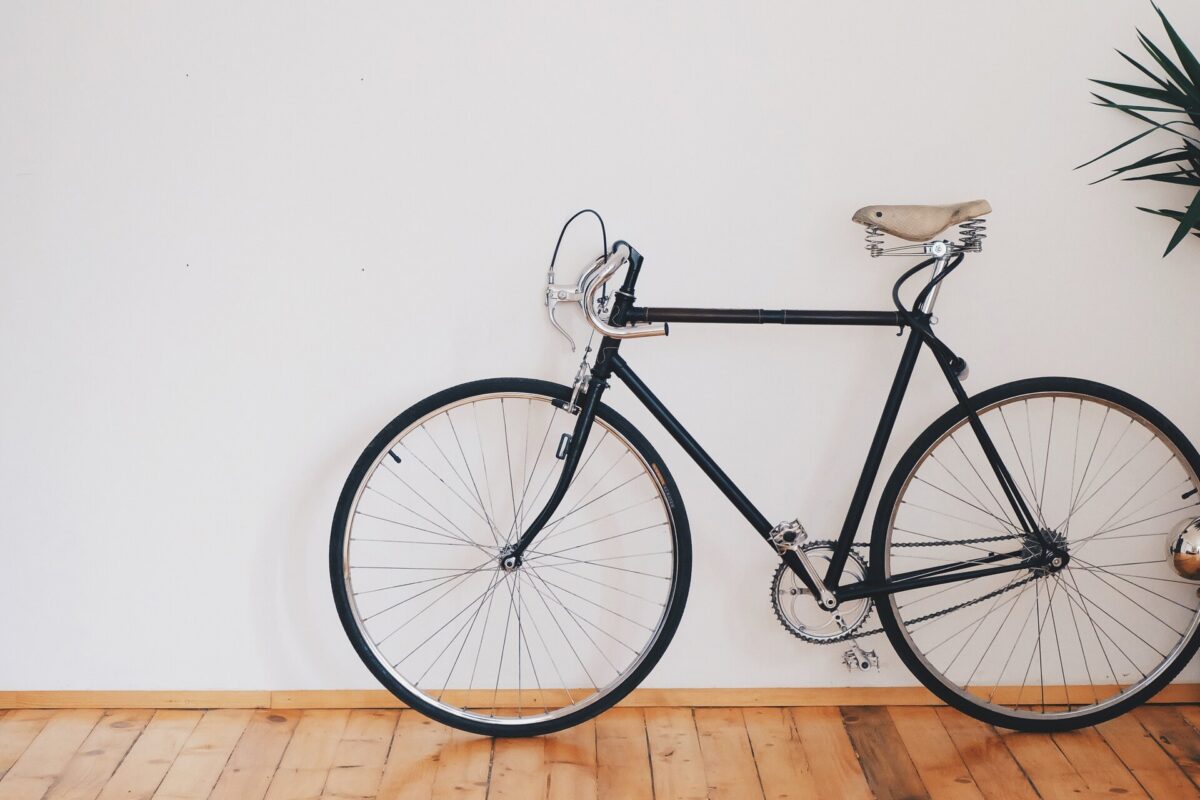To pack a bicycle for transport, start by removing the pedals, handlebars, and wheels. Wrap each component with protective material like bubble wrap or foam padding. Place the frame vertically in a bike box, with the rear dropouts facing down. Secure the frame with straps or zip ties. Pack the wheels alongside the frame, and place the pedals, handlebars, and other smaller components in plastic bags within the box. Finally, add extra padding around the frame to absorb any shocks during transit.
How to Pack a Bicycle for Moving: A Comprehensive Step-by-Step Guide
When preparing for a move, protecting a bicycle requires special attention to ensure its safe transport. Properly securing all the components is crucial to prevent any damage during the journey. We will explore the essential steps and techniques on how to pack a bicycle for moving.


Learn How to Pack a Bicycle for Moving, and You Can Pack Anything
Learning how to pack a bicycle for cross-country moving is an invaluable skill that goes beyond just transporting your two-wheeled companion with long-distance moving services. It teaches you the art of careful planning, efficient organization, and meticulous protection.
Mastering the art of securing delicate components, such as the frame, wheels, pedals, and handlebars, equips you with the knowledge and confidence to pack anything for moving or shipping. The attention to detail, precision, and problem-solving required in packing a bicycle translate into invaluable skills that can be applied to packing other belongings.
Whether it’s fragile items, bulky furniture, or even delicate china, the principles of proper padding, secure arrangement, and strategic placement can be adapted to ensure the safe transport of any object. So, invest the time and effort in learning how to do it properly, and you’ll discover that you can pack anything confidently and easily.
Gather Necessary Supplies
Before you start packing your bike so your cross-country moving company can transport it safely, you need to make a list of all the necessary materials and tools. This checklist should include items such as a bike box, bubble wrap, paper, packing tape, cable ties, and foam padding.
Take note of the size of your bike and whether you’re packing other items with it. With this information, you’ll find it easier to choose the right size and type of box you need, as well as the number of additional protective materials required.
Bike Boxes for Moving – What Are They?
A bike box for moving is a specially designed box that provides maximum protection to your bike during transportation. It’s made of sturdy and durable materials, has an ergonomic design, and can accommodate different types of bikes.
This means that you can safely transport your bike without worrying about it getting damaged in transit. With a bike box, your vehicle is completely enclosed and protected from the elements and potential accidents. Plus, they’re very easy to handle and transport, making them ideal for long-distance moving. Selecting the right box for your specific bike is crucial.
You need to make sure that it fits inside perfectly to prevent any damage in transit. Consider the size, the type, and any extra gear or accessories that need to be packed. You should also check the weight of the box to ensure that you can easily lift it and transport it to your new location.


Disassembling Is the Best Way to Ship a Bicycle
Moving cross-country is already a stressful and time-consuming process, and the thought of shipping your bicycle to a new state can only add to that stress. However, disassembling your bicycle can make everything much safer and stress-free. It not only protects your bike from damage but also ensures that it takes up less space.
Remove Pedals, Wheels, and Handlebars
The first step is to remove the pedals, wheels, and handlebars. Start with the pedals by using a pedal wrench to loosen them. Then, use a quick-release lever or an Allen key to remove the wheels. Lastly, use a wrench or Allen key to loosen and remove the handlebars. Keep the screws, nuts, and bolts in labeled plastic bags to keep them organized.
Once you’ve removed the pedals, wheels, and handlebars, it’s time to disassemble the remaining parts. Take the seat and post out of the bike and store them in a separate plastic bag. Loosen and remove the brakes, and keep them in a labeled plastic bag. Remove the derailleur and wrap it with bubble wrap to keep it safe.
Protect Fragile Parts
There are a few fragile parts, such as a derailleur and a fork, that should be properly protected and secured. Use bubble wrap to wrap the derailleur and secure it with duct tape. Cover the frame with a foam tube or a similar material to prevent scratches or damage to the paintwork.
The final step is to securely pack all the parts in a bike box or a box filled with packing material (you can even use crumpled paper) to prevent any movement during transit. Make sure that the box is labeled fragile and has the appropriate labels on it. Consider using a tracking service or insurance to ensure your vehicle is protected and arrives at its destination safely.
If you’ve never disassembled your bicycle, you can watch a how-to in the video below.
How to Pack a Bike Box
When you want to pack efficiently, one of the most critical steps is positioning the frame of the bicycle correctly to ensure its safety during transportation. Here are some guidelines to follow, along with tips for padding and securing the frame:
- Start by removing the pedals and handlebars from the frame. This will help reduce the overall size of the bike and make it easier to position in the box.
- Carefully place the frame inside the box, aligning it vertically with the rear dropouts facing down. The rear derailleur should be facing the front of the box. This positioning helps protect the derailleur and rear derailleur hanger from potential damage.
- If your bike has a detachable fork, remove it and secure it alongside the frame inside the box. Use bubble wrap or foam tubing to protect the fork and prevent any contact with the frame during transport.
- To protect the frame, pad it adequately. Start by wrapping the frame tubes with foam tubing or pipe insulation. Pay extra attention to the areas where the frame is likely to come in contact with other components or the box walls, such as the chainstays and seat stays. Use zip ties or Velcro straps to secure the padding in place.
- Secure the frame inside the box using straps or zip ties. Make sure the frame is snugly held in place and doesn’t shift during transit. This will help prevent any potential damage caused by movement.
- For added protection, consider placing extra padding around the frame, such as foam blocks or bubble wrap, to absorb any shocks or impacts that may occur during transportation. This can help safeguard the bike from external forces.
By properly positioning the frame in the box and implementing these padding and securing tips, you can significantly minimize the risk of damage during transport. Remember to double-check all connections and ensure a tight fit before sealing the box. Following these guidelines will give you peace of mind, knowing that your vehicle is well-protected and ready for a safe journey to its destination.
Moving
Our mission is to bring high quality, long distance moving services to every customer.

Auto Transport
Cross Country Moving Company is the most trusted name in auto industry in the country.
Moving Insurance
Cross Country Moving Company is the most trusted name in the relocation industry in the country.
Add Additional Components to the Box
It’s also important to include all the additional components securely. Remove the wheels from the frame and deflate the tires slightly to reduce the risk of damage during transit. Place each wheel in a dedicated wheel bag or wrap them individually with bubble wrap or foam padding.
Next, unscrew the pedals from the crank arms. Wrap each pedal with bubble wrap or foam padding to prevent scratches or damage. Place them in a plastic bag or dedicated pedal bag and secure them to the interior of the box, away from the frame and other components. Loosen the stem bolts and rotate the handlebars sideways to align with the frame. Secure them in this position using zip ties or Velcro straps.
Lower the saddle to its lowest position or remove it completely if possible. Secure the saddle and seatpost together using zip ties or a dedicated seatpost clamp. Collect any small parts, such as the electronic components, water bottle cages, or toolkits, and place them in a small bag.


Seal and Label the Bike Box
Moving to a new city can be exciting, but it can also be stressful, especially when it comes to transporting your precious bike. You don’t want your bike to get damaged during transit, and that’s why it’s essential to pack it correctly.
One of the ways to ensure your bike’s safety is to place it in a bike box and seal it properly. In this post, we will provide some tips on how to effectively seal the box and why labeling it is essential.
Use Tape to Secure the Package
Tape is an essential item when it comes to sealing the box. However, be careful when selecting the type of tape to use. The best type of tape to use is strong and wide-gauge tape.
The tape should be strong enough to hold the box together but not so strong that it leaves a sticky residue when removed. You can also double-tap the box to ensure it’s secure. Make sure to tape all the seams and edges of the box.
Add Bubble Wrap or Foam
It’s a good idea to wrap your bike with bubble wrap or foam before placing it in the box. You can also add bubble wrap or foam to the sides of the box to provide extra cushioning. This will ensure that your bike stays in place during transit.
Label Your Box
It’s important to label the box with its content, and the same goes for all inventory handled by a professional cross-country moving service. This will ensure that your box is accounted for and handled correctly. Also, make sure to label the box as fragile and indicate which side is up. This will alert the movers to handle your box with caution.
Determine the Best Way to Ship Your Bike
You have finally decided to live in your dream city far from where you currently live. You’ve packed everything you need but what about your bike? You can’t just leave it behind. It’s been your companion for a while, the ideal transportation to explore your new city and keep your fitness going.
However, shipping can be expensive and risky. What if it gets damaged along the way? Fortunately, with the right approach, you can ensure that your bike arrives safely without breaking the bank.
Ask Cross-Country Movers About Bike Shipping Policies
The first step is to contact cross-country moving companies to get information about their bike shipping policies. Ask the companies about their experience with shipping bicycles. Look for a company that has experience in bike transportation and has the right equipment to keep your vehicle safe and secure when transporting it on long-distance routes.
You can request the company to provide you with their packing services and additional storage service packages. You might be surprised at the options available to you, including free storage during your relocation.
The next step is to prepare your bike and deliver it to your chosen carrier on time. Ensure that it is clean and free from any debris. Remove any attachments, like lights or bike computers, as they can come loose and cause damage to your or other bikes.
Add extra padding around fragile areas like the frame, especially if it’s a carbon fiber or aluminum frame. Finally, label the box with your name and destination in bold letters to avoid confusion.


Now That You Know How to Pack a Bicycle for Shipping, You’re Ready to Move Across the Country
Having a solid understanding of preparing a bicycle to be shipped is an invaluable skill when preparing for long-distance moving. By carefully disassembling and securely packaging each component, we can ensure the bicycle’s safety and prevent any potential damage during transit.
Following the recommended steps and utilizing appropriate materials will provide peace of mind, knowing that the bicycle will arrive at its destination in excellent condition. Remember, taking the time to properly pack and protect your bicycle is crucial in preserving its integrity and ensuring many more enjoyable rides in the future.
If you’re looking for professional assistance with your cross-country move, consider reaching out to the Cross Country Moving Company for reliable and hassle-free relocation services. Contact us today to get a personalized quote and make your move across the country a breeze!
FAQ
How Long Does It Take to Pack a Bicycle for Shipping?
The time it takes to pack a bicycle for shipping can be different, depending on your experience and the level of disassembly required. On average, it can take between 1-2 hours to properly disassemble, pack, and prepare a bike for shipping.
Do I Need to Disassemble My Bike Before Packing It for Shipping?
Yes, it is recommended to disassemble it before packing. This will help prevent damage during transit and ensure that the bike fits properly in the box.
What Type of Box Should I Use for Shipping My Bicycle?
Using a sturdy, corrugated cardboard box specifically designed for shipping bicycles is important. The box should be large enough to fit your disassembled vehicle, with some extra space for padding and protection.
Can I Pack My Bike Myself, or Do I Need to Hire a Professional?
You can certainly do it by yourself if you have the proper tools and experience. However, if you’re unsure about the process, hiring a professional long-distance moving company may be best to ensure it is properly packed and protected.
Are There Any Special Instructions for Packing an Electric Bike for Shipping?
When packing an e-bike for shipping, it is important to remove the battery and pack it separately. The rest should still be disassembled and packed similarly to a non-electric bike. Be sure to ask your long-distance movers for any specific regulations regarding the shipment of electric bikes.
How Can I Protect My Bike From Damage During Shipping?
To protect your bike from damage during transportation, be sure to use plenty of padding and protection in the box. Bubble wrap, foam padding, and packing peanuts can all be used to help cushion the bike during transit. Additionally, be sure to properly secure all parts to prevent movement and potential damage.
Can I Ship My Bike Internationally?
Yes, you can ship your bike internationally. However, there may be additional regulations and fees depending on the destination country. Be sure to inquire about that with your carrier and destination country’s customs regulations before shipping your bike internationally.
How Much Does It Cost to Ship a Bike?
The cost can vary due to several factors, including the size and weight of the package, the destination, and the shipping carrier.
What Should I Do if My Bike Is Damaged During Shipping?
If your vehicle is damaged during shipping, document the damage with photos and contact your cross-country movers immediately. They will likely have a claims process in place to help reimburse you for any damages incurred during transit.








